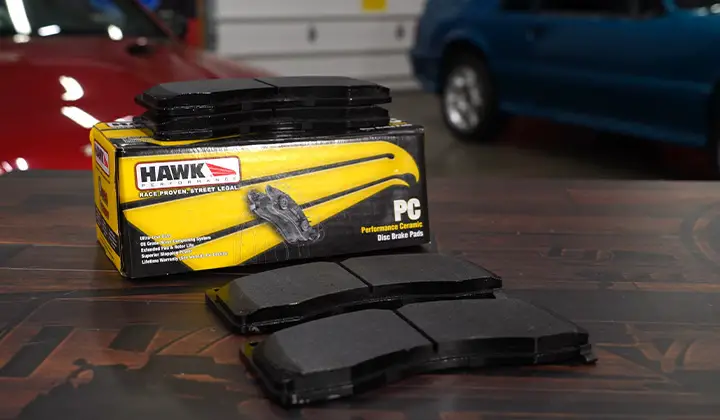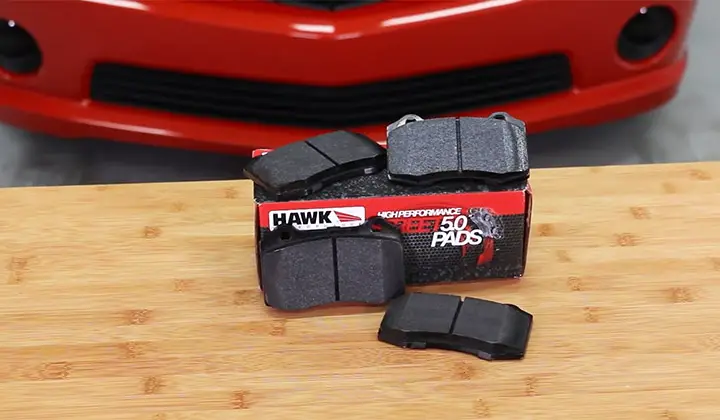The break-in procedure is usually done in two rounds. In the first round, the vehicle is speeding up to a certain MPH and repeats this again and again. Next, the brake pads should show a distinctive color change from when they were first applied. This change is the transfer layer. Once the break-in has been completed, the brakes should provide the driver with smooth braking.

What is break-in
The break-in procedure is one kind of process that establishes an even layer of friction on rotors. The friction material does deposit on the rotors from the brake pads. This initial layer of friction material must be equally distributed on both rotors.
Why bedding in is important
Bedding in, commonly known as breaking in. The new brake pads and rotors are necessary for new brakes to work properly. It is also a good way to safely stress-test your braking system to be sure everything is working properly.
The bedding in, the process put a layer of material onto the friction surface of the rotor from the brake pad. The transfer layer improves the brakes’ performance. This extends their lifespan by enhancement of the friction generation of the brakes and rotors.
Even more important, it helps you to understand exactly how your brakes do their job. The consequences of not bedding in is not a life-threatening issue but you will miss the benefits of bedding-in.
More details
In the beginning, you will not be able to find any “pad transfer” material on the new pads and rotors. If you look at the friction surface on a used rotor, you will notice a shiny, smooth grey-blue “glaze”.
This form creates through the high temperature, a high friction process that has been deposited on the rotor.
A brake pad pressing against bare metal actually does not stop well. But, a brake pad pressing up against brake pad material, with steel underneath stops! So laying down a good foundation for future material is what the bedding procedure does.
Why should you break in pads
There will be a time when the pads will run too hard, too fast that ultimately make the pad surface transfer onto the rotor. Which later causes an uneven area of pad material deposited on the brake rotor.
But once you drive again, the new pad material is then deposited on top of and around this extra deposit. Which then creates an uneven surface on the rotor. Thus, the name of this very phenomenon is “ warped rotor”.
There is a good chance this problem could have been avoided with the proper breaking-in procedure. But sadly, which was not done properly in the first place.
Hawk HPS brake pads
Hawk Performance HPS performing street brake pads are for street driving. The pads have low dust and have 40% more stopping power. Because of this, they have specific instructions on how to install them and how to break in pads.
Install the pads
After ensuring the pads are correctly are in positioned in the caliper, check the brake fluid. Do flush and replace, if needed. Also, check all the hydraulic parts for excess wear.
Check the rotor for deep grooves or scoring. But if the rotors do not need a resurfacing, then contaminate them from the previous brake pads.
Sand rotors with 130-grit sandpaper using moderate pressure. Use soap and water to clean the rotor’s surface after sanding it properly. These steps are necessary because rotors should be free and clear of oil, grease, and brake fluid.
Street pad bedding in
Try to make 6 to 10 stops from approximately 30 to 35 MPH but of course with moderate pressure. Then make an additional 2 to 3 hard stops from approximately 40 to 45 MPH. After this, allow your car 15 minutes for the brake system to cool down and you are good to go.
Tips
Do not drag brakes while doing this.
Motorsport pad bedding in
When you are reaching a medium speed, engage the brake pedal to slow down the car but without coming to a complete stop. Repeat four or five times but do not drag brakes. Then do this by engaging the brake pedal again at higher speeds and near race speeds.
Lastly do not hold the brake pedal. Stop your car for about 20 minutes or so until the brake rotors are completely cool down.
Tips
If during the above steps the brake pedal becomes soft or brake fade is noticed, park the car immediately for approximately 20 minutes. Allow a few seconds between brake engagements while the car is in motion.
Motorcycle pad bedding in
Usually, new brake pads can take up to 200 miles for a complete break-in. For that avoid extreme braking until your pads and rotors achieve necessary surface contact.
Motorcycle metallic break-in
For this metallic break-in, make 10 stops from 30 MPH to 15 MPH. Next, make an additional 10 stops from 50 MPH to 15 MPH. However, give a little time between stops as possible.
Motorcycle organic break-in
They have the same process. But for this case, avoid extreme braking for the first 200 miles.
Important reminders while the break-in
Avoid using damaged rotors with your brand new brake pads. Do not drag brakes while the car is moving during the break-in procedure. Also at the same time do not engage the pedal while the car is stopped at any time following the break-in procedure.
After the procedure, allow the brake system to completely cool before you do racing. Before starting the race, apply the pedal a few times because this will allow the brake pads to heat up before attempting to reach race speeds.
Common instructions for break-in
Find a safe spot to break in your pads. Now accelerate to 35 MPH and apply moderate brake pressure to reduce your speed to under 5 MPH. Repeat this process 2-3 times and accelerate back to 35 MPH and do moderate braking.
Next, increase speed to 50 MPH and strongly brake down to 5 MPH. You should be able to come down to 5 MPH within a few seconds.
Repeat this process 4-5 times, then drive an additional 1-2 miles while very lightly braking to cool down the brakes.
FAQ

Are Hawk brake pads any good?
Answer. The pads are more responsive and durable than most standard original brakes and this makes Hawk Performance HPS pads the first. Their prices are also very reasonable.
How long do new brakes take to break in?
Answer: This should be done carefully and slowly. Most brake pad compounds will take up to 300-400 miles to fully develop an even transfer film on the rotors.
Do new brakes have a break-in period?
Answer: It is advantageous to bed in your new brakes. Bedding in your brakes is just an industry term to explain breaking in your new brakes. which means slightly more aggressive than normal braking.
How do you break in new ceramic brake pads?
Answer: just increase the car’s speed up to about 40 or 45 miles per hour. Once again, brake the car, but stop the vehicle and allow the ceramic brakes to cool.
Conclusion
It is important to remember safety when attempting to bed in the new brakes. To maintain the safety of anyone on the road, it is best if bedding in is done in an area with little to no traffic. After breaking in the Hawk HPS brake pads, you will get perfectly working brake pads.

Thank you very much for the detailed break-in instructions. I will follow them religiously. My brand-new Hawk brake pads and rotors are currently being installed by my trusted mechanic. My 2015 Ram 1500 Sport R/T is of very high value to me therefore I try to purchase high quality replacement parts when needed as long as price is within reason.